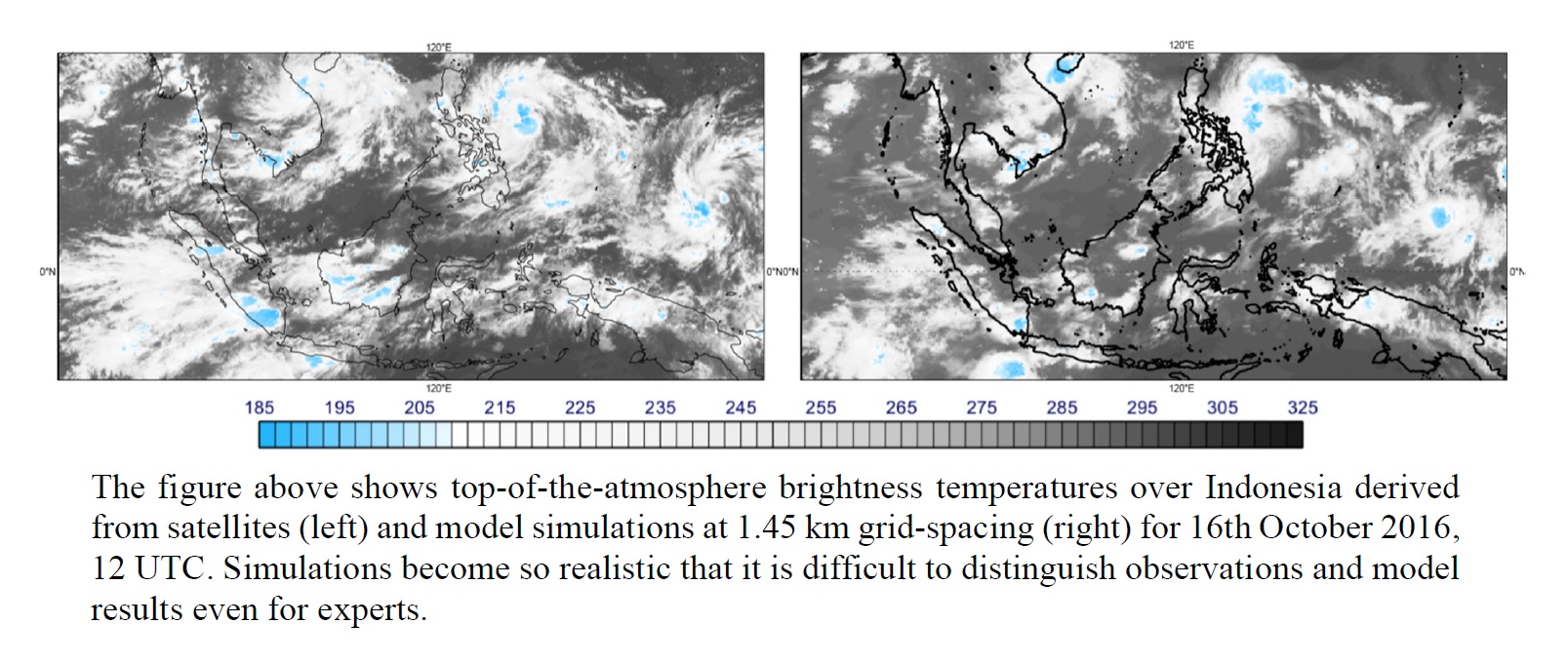Graphical Abstract
Dueben, P. D., N. Wedi, S. Saarinen, and C. Zeman, 2020: Global simulations of the atmosphere at 1.45 km grid-spacing with the Integrated Forecasting System. J. Meteor. Soc. Japan, 98, 551-572.
Special Edition on DYAMOND: The DYnamics of the Atmospheric general circulation Modeled On Non-hydrostatic Domains
https://doi.org/10.2151/jmsj.2020-016
Graphical Abstract
Plain Language Summary:
Numerical weather and climate models represent the dynamics of the atmosphere on a numerical grid. As the resolution of this grid is increasing, more and more details can be resolved within the atmosphere model. This comes at a price of increased computational cost paired with additional challenges to run on current and future supercomputers in an energyefficient manner and to manage the resulting data.
This paper presents global simulations of the atmosphere at an unprecedented level of resolution with 1.45 km grid-spacing that allow to represent important features of atmospheric dynamics, such as large thunderstorm systems, explicitly within simulations. The Integrated Forecasting System is used to perform such simulations that show the full complexity for the representation of the atmosphere that would be used in operational weather predictions.
The performance of simulations is diagnosed when running the Integrated Forecasting System on the fastest supercomputer in Europe, called Piz Daint and based at CSCS in Switzerland. Important choices for the model configuration at this unprecedented resolution are discussed and evaluated.
Highlights:
- Simulations with 1.45 km grid-spacing for the atmosphere are possible with the Integrated Forecasting System and scale reasonably well on the largest supercomputer of Europe.
- The numerical formulation of the Integrated Forecasting System – which is based on so-called spectral discretisation methods – is competitive against other models in terms of efficiency at this level of resolution.
- High-resolution simulations show the expected benefit regarding realism and added value for the representation of the atmosphere.
- Further model developments will still be required to optimise forecast skill at this level of resolution.







